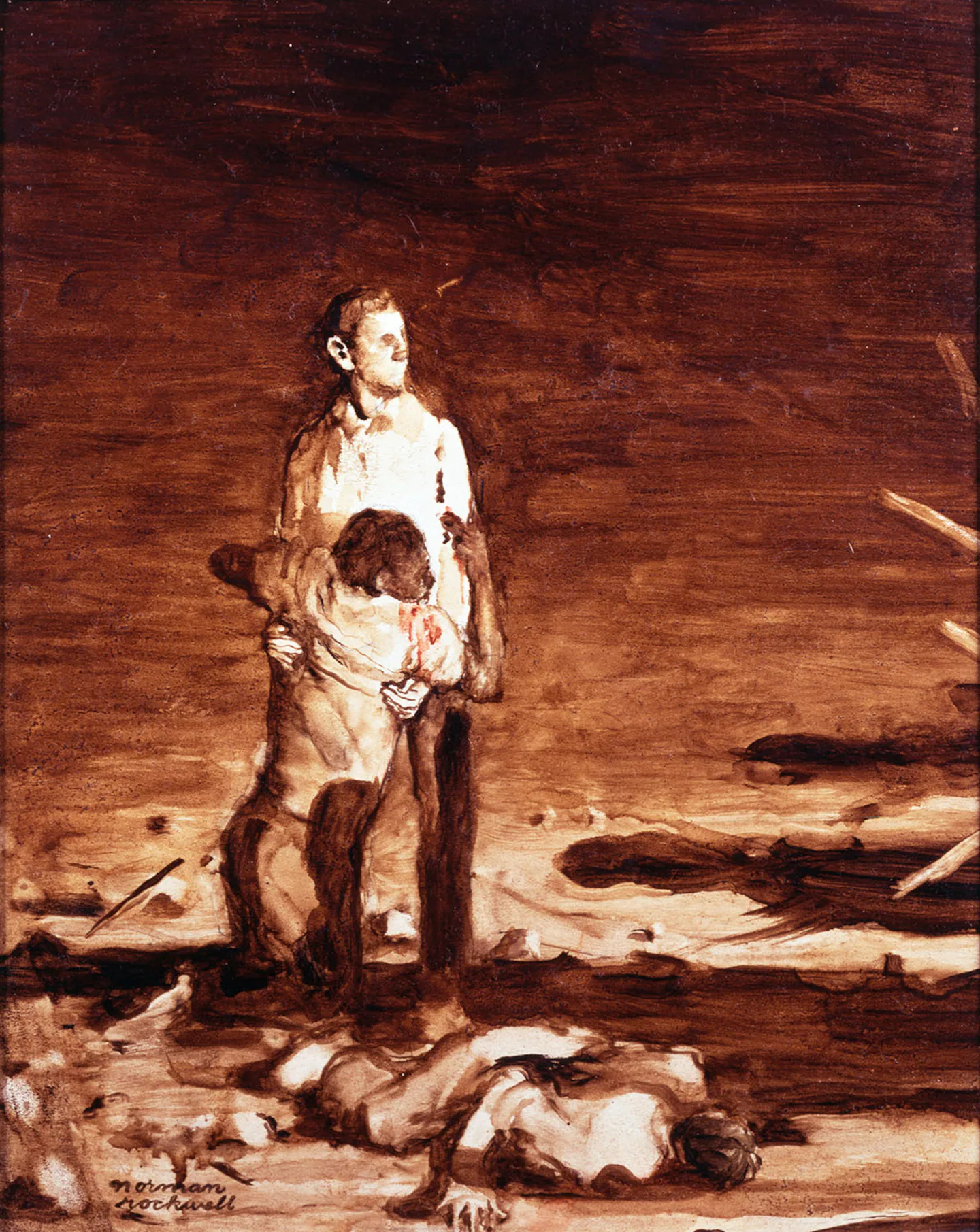Copyright The Boston Globe

It’s those kinds of images — and Rockwell made thousands of them — that landed in the news last week as Rockwell’s heirs protested their unauthorized use by the Department of Homeland Security’s infamous social media feeds. In an opinion essay published by USA Today, Rockwell’s heirs excoriated DHS not only for their unauthorized use, but especially for yoking them to the service of the department’s aggressive immigration purge. Over the past several weeks, DHS has posted several Rockwell works, cast with its thinly-veiled agenda of regressive anti-diversity; one, “Salute the Flag,” shows a stars and stripes trimmed in gold fringe billowing above a cluster of Americans of all ages, with the statement “Protect our American way of life.” Rockwell is one among many artists, or their heirs, furious with their work being used to buttress DHS’s mass-deportation agenda. But the problem, as the Rockwell family writes, is that Rockwell “felt an urgent need to raise his voice against the racism and injustice he witnessed all around him.” That may not be where he started, but it’s surely where he ended up. The piece that appeared in Look, “Murder in Mississippi (Southern Justice),” at the apex of Rockwell’s Civil Rights activism, is no outlier, though it’s rougher than almost all his finished work; Allen Hurlbut, Look’s progressive-minded art director, decided to publish Rockwell’s gutsy sketch instead of the finished painting he made from it. The year before, Rockwell had painted “The Problem We All Live With,” of 6-year-old Ruby Bridges being escorted to her newly-desegregated New Orleans school by U.S. Marshalls. A few years earlier, Rockwell had crafted his vision of the America he aspired to, maddeningly out of reach: “Golden Rule,” from 1961, a rainbow coalition of Americans from all backgrounds — Black, white, Asian, Arab, Jewish, Muslim, Christian — coming together in shared dignity and respect. How did Rockwell, whose career began as a fabulist of narrowcast, homespun white America, land here? It’s a remarkable arc for a sensitive recluse always kept at a distance from “serious” art. Rockwell’s career began in the depths of the depression, when the Saturday Evening Post simply saw it as good business to sell sunshine to an American public in desperate need of it. Rockwell, with his skillful gift for inflecting pinpoint realism with the warm glow of aw-shucks nostalgia, was the Post’s vehicle for the effort. It worked beautifully, for a time; Rockwell produced thousands of goofily heartwarming images of blithe American cliches. It made him famous, and the Post a weekly must-have for millions of Americans from one sid?e of the country to the next. When the U.S. entered the Second World War, Rockwell turned his talents to sympathetic portrayals of frecklefaced boy-next-door soldiers fighting the good fight, and to scenes of unvarnished patriotism, which only added to his fame. Then, in 1941, President Franklin Deleanor Roosevelt delivered his state of the union speech on the “Four Freedoms,” to rally the country to the war cause based on the country’s core values: Freedom of worship and speech, and from fear and want. Rockwell, always a student of European old master painters, saw an opportunity to elevate his craft. He proposed a four-part series reflecting each of the freedoms as a fundraiser for the war effort, which the Post published in February, 1943. It worked: The magazine was overloaded with demand for reprints, and a tour hastily arranged by the Treasury Department, with poster signings by Rockwell himself, yielded $133 million in sales of war bonds for the overseas campaign. Rockwell, whose later years were spent in Vermont and Stockbridge, MA, heightened his profile in that moment of one-note patriotism. But he was never so one-note himself. When the war ended and morphed into sunny post-war optimism, he became keenly aware of the racial divide that had become clear as the country celebrated its victory of freedom over oppression. An exhibition in 2020 at the Norman Rockwell Museum in Stockbridge delved into the complexities that swirled around Rockwell’s fame, and the uneasy time he found himself in. The Post had strict rules that did not allow Black figures to be portrayed in anything but servile roles, a policy against which Rockwell had begun to chafe. At one point, he was ordered to remove a Black man from an illustration that portrayed him as equal to the white figures in the scene, and enough was enough. At the height of his renown, he quit the Post in 1963 and explicitly chose a side. “Murder in Mississippi,” two years later, landed in Look magazine as not only a shift in Rockwell’s vision of America, but a broadening view of the nation itself. The Post, staunchly traditionalist and parochial, was losing ground to a new generation of news weeklies, LIFE and Look among them, willing to embrace the upheavals in American life that had grown more inescapable by the day. Unlike his former employers, Rockwell refused to look away, and would spend the rest of his life, and career, portraying America as he saw it —. imperfect, at odds, but striving for better. “Murder in Mississippi” is an image of the country at its darkest. With the violent convulsions of ICE raids across the country yielding more pain and injury every day, it’s one Rockwell DHS might use and speak the truth.



